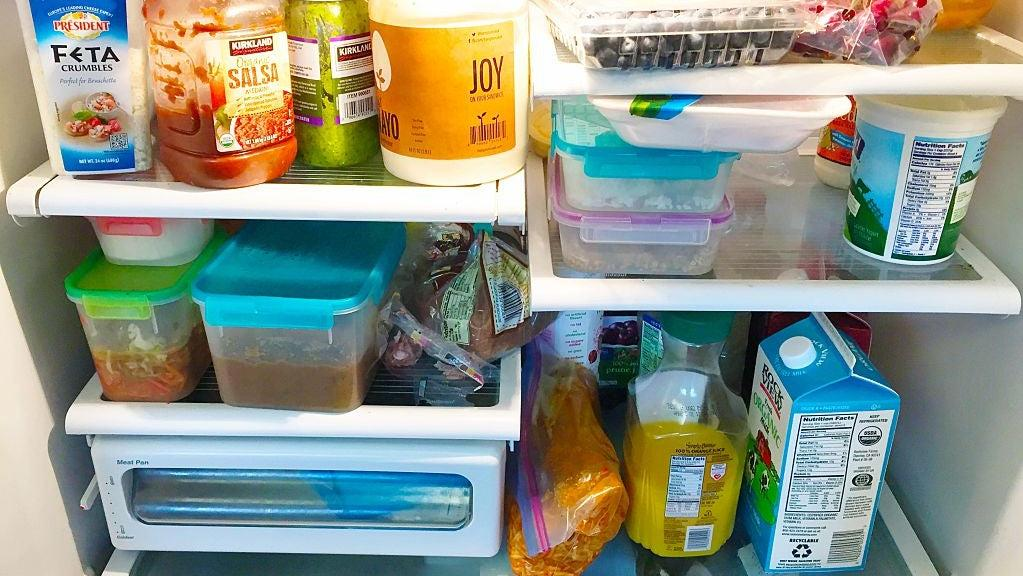My Favorite Food Storage Containers For Every Kitchen Task
We may receive a commission on purchases made from links.
My husband and I are both professional recipe developers who work from a home that's shared with two teenage boys, which is why you will never, ever see a photo showing off the inside of my fridge on Instagram. When my work-related groceries arrive, I do my best to pack them into the fridge in a logical arrangement. Then my husband's groceries arrive, and we carefully Tetris them in. Then our personal groceries come, and instead of maintaining any sort of order, the kids stuff them into whatever spaces they can find, regardless of whether or not they fit. Thirty minutes later they decide they're hungry, remove everything from the fridge because they "can't find what they want," and then toss it all back so they can get on with eating their sandwiches.
I am hoping that order will be restored once my sons have stopped eating me out of house and home, but until then, I have had to make peace with the fact my refrigerator is an anarchist state. However, I will not lie down and let my precious groceries to be bruised and battered, nor banished to the back of the fridge where they will certainly spoil. If one is to survive chaos, one must be equipped with the right tools for the job.
My number one go-to for leftovers, pre-prepped ingredients, and most loose odds and ends are plastic quart containers. These are what professional kitchens use and what every home kitchen should use too, in my opinion. Quart containers are uniformly sized, easily stackable, freezer-friendly, dishwasher safe, and microwaveable. When the majority of your food storage vessels are exactly the same, it's easy to keep cabinets orderly, and you can avoid having an emotional breakdown over mismatched lids. I label the contents of each container with two pieces of masking tape—one on the lid, one on the side—so I can identify them no matter their position or orientation. They're just as useful inside the fridge and out: I use them for storing pantry ingredients like specialty flours and dried beans, freezing extra soup (I always make too much soup), packing up leftovers, organizing smallwares, making cold brew... seriously, I do not know how anybody can function in the kitchen without these things. Outside of the kitchen, my husband and I both use quart containers as drinking glasses, because our cats find it difficult to knock them off the table.
For ingredients that might spoil quickly if they get lost in the fridge, I like vacuum-seal containers made of thick plastic with snap-on lids, like the ones from Lasting Freshness. I have no room for any more appliances in my kitchen, so I appreciate that these containers allow me to suck the air out of things with a tiny hand pump that fits in my silverware drawer. I use a ton of lemons in my day-to-day cooking, so I buy them in bulk and store them in a large vacuum-sealed box, where not a single lemon has grown single spot of mold.
To protect things like mushrooms and herbs I like breathable cloth bags like the ones from Ambrosia, which are flexible enough to squeeze into oddly shaped spaces while remaining noticeable and keeping their contents safe.
Though plastic containers are versatile (and have low odds of breaking when they tumble off the shelves of an over-packed fridge), I am trying my best to avoid single-use plastics, like disposable zip top bags. For instances where those are the most convenient option—when marinating meat or freezing scraps for stock, for example—I turn to reusable Smelly Proof bags, which are surprisingly easy to clean. Just fill them about one-third of the way up with warm water, add a drop of antibacterial dish soap, squeeze out the air and seal, then rub the bag in your hands for about 15 seconds. Not only does it get them squeaky clean, it's also an incredibly soothing motion, which is a great way to relax after seeing what your kids have done to your fridge.
